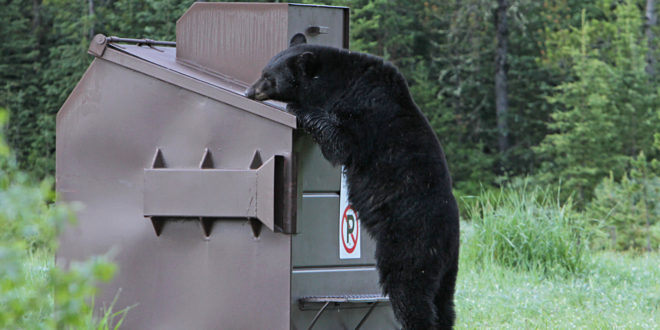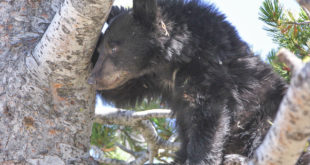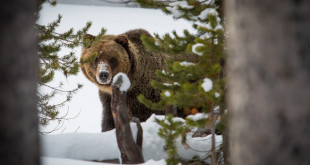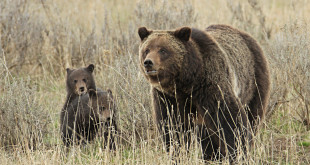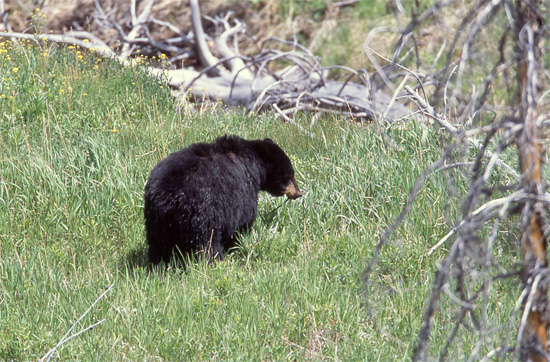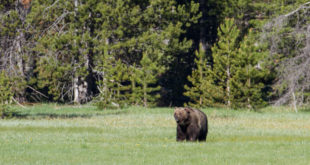After several more Yellowstone wildlife incidents involving black bears, National Park Service officials are asking visitors to exercise more caution when handling food at campsites.
Three incidents were cited by Yellowstone National Park officials:
- Last month, at a backcountry campsite along Little Cottonwood Creek, a black bear bit into an occupied tent and bruised a woman’s thigh (the bite did not break the skin due to the tent fabric and thick sleeping bag). Rangers suspect that this might have been a bear that gained access to human food in this same area in previous years. Over subsequent days, rangers set up cameras and a decoy tent at the campsite to determine if the bear would continue this behavior. With rangers present, the bear returned and aggressively tore up the decoy tent. The bear was killed on-site on June 11.
- In early July, at a backcountry campsite along the Lamar River Trail, campers left food unattended while packing up gear allowing a black bear to eat approximately 10 pounds of human food. Campers who visited the same campsite the following evening had numerous encounters with the same bear. Their attempts to haze the bear away failed. Rangers relocated multiple campers from the area and the bear was killed on July 10. The incident is still under investigation.
- Since July 18, at the frontcountry Indian Creek Campground, a black bear has caused property damage to tents and vehicles in its search for human food. Park staff actively hazed the bear from the campground, but also set up cameras. If the bear returns, managers will take appropriate actions based on the current circumstances, including additional hazing or removal.
The lesson: Take lots of care when handling food at campgrounds. Once a black bear stumbles across some food, it will return time and time again to that site in search of more food. (Yes, they are creatures of habit.) And once a Yellowstone bear starts acting out, it’s put down and not relocated. The reasons why, according to Park officials: 1) there are no areas in the park to move the bear where it wouldn’t have the continued opportunity to potentially injure someone and damage property, 2) surrounding states do not want food-conditioned bears relocated into their jurisdictions, and 3) adult bears have large home ranges, good memories, and could easily return to the original area.
Photo by Jim Peaco near Ice Box Canyon;, courtesy National Park Service.
 Yellowstone Insider Your Complete Guide to America's First National Park
Yellowstone Insider Your Complete Guide to America's First National Park
